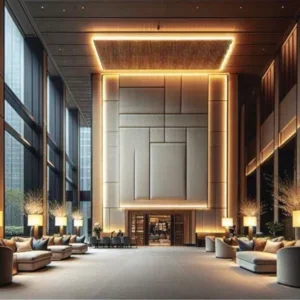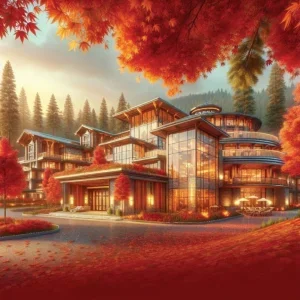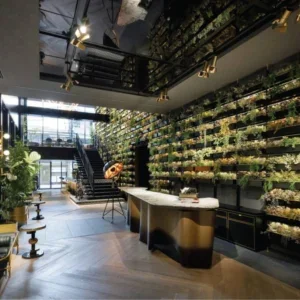"There is a lot of interest in the Middle East at the moment, and the countries in the region can be broken down into three categories," says Hala Matar Choufany, regional managing director of HVS Global Hospitality Services. "In established markets, there is a lot of infrastructure in place, but there are still growth opportunities. There are also stagnant markets that suffer from political instability and, finally, there are developing markets.
"Among the established markets are places such as Dubai, Riyadh, Abu Dhabi, Medina and perhaps Qatar, which have the right level of commitment from governments and a lot of investment appetite."
In the years directly preceding the global financial crisis, huge amounts of money were spent on hotel infrastructure across the region, although such investment could look somewhat unfocused. While the amount of cash moving through the development pipeline has returned to impressive levels, what has emerged alongside is a more disciplined and informed investor profile, with specific characteristics applicable to specific countries within the Middle East.
"In general, there is a positive trend in the region, though we have moved away from the frenzy of the boom between 2006 and 2008," says Chiheb Ben-Mahmoud, head of hotels and hospitality for the Middle East and Africa at Jones Lang LaSalle. "We are now in a more sustainable development phase, with differences emerging between countries. All destinations are seeing development, and although each chooses its own course, they prioritise hotel development,"
Nevertheless, the familiar pattern of development is changing. In recent years, a useful rule of thumb was ’30/20/10′ – for every 30 hotels developed in Dubai, one could expect 20 in the pipeline for Saudi Arabia and ten for Qatar.
"The rule no longer holds true; estimates differ depending on who’s counting," says Catalin Cighi, managing partner at Cain Hospitality Innovation. "Those who rely primarily on data contributed by large international chains will tell you that Saudi Arabia already took the lead with 35,000 rooms in the pipeline, followed by the UAE with 25,000 rooms.
"Those that include the less reliable pipeline data of local brands and independent hotel developers will tell you that the UAE still leads with 45,000 rooms, of which around 30,000 are in Dubai, followed by Saudi Arabia with 40,000 rooms, of which around 15,000 are in Mecca.
"Most sources tend to reach consensus at Qatar’s pipeline being around 11,000 rooms, and as 70% of the pipeline is scheduled for delivery in the next three years, it is more likely to come through than the projects with longer delivery timelines."
Developing need
Each market has a unique set of drivers. Saudi Arabia, for example, needs more capacity to meet demand, particularly in cities with religious significance to the world’s Muslim population.
"It is a matter of scale and catching up with the need for product," Cighi continues. "There are relatively few hotels per capita in Saudi Arabia, so we will see a lot of mid-scale and economy brand development in secondary cities.
"Holy cities are burgeoning in terms of their need for hotels, and the impressive plans for the development of Mecca put it second only to Dubai in terms of the development pipeline, depending on who’s counting and which data you choose to look at."
In Dubai, development slowed in the aftermath of the global financial crisis, but now everyone wants to get a piece of the action again, with the prospect of Expo 2020 Dubai an important milestone for developers to aim for. Development in Qatar has also been boosted by the prospect of the 2022 FIFA World Cup. It is far from clear whether it will go ahead there, but even without the prestige of that event, the city has an ambitious strategic plan stretching out to 2030.
"In Dubai, tourism is a core industry, and it has long-term plans. Qatar is going at full speed in preparation for the World Cup, with unprecedented infrastructure development," remarks Ben-Mahmoud. "Bahrain, where the Four Seasons will open soon, is back with high-profile projects that could give it a new image. Oman, however, has a very prudent approach: it is moving away from the large, mixed-use developments announced by foreign investors in 2007 and pursuing more of a domestic play in new projects to consolidate its hospitality proposition."
Owners and managers
So far, the emphasis has been on luxury hotel developments in the region. In Dubai for instance, the Four Seasons will open in late 2014, the Mandarin Oriental and St Regis are slated for 2017, and 2018 should see the opening of a new Bulgari property. This trend is changing but only very slowly.
Bahrain and Qatar are highly dependent on corporate travel so may need to diversify into mid-market properties, although the buzz about mid-market development is mainly in Saudi Arabia and, to a lesser degree, Dubai. This trend could have implications for operating models.
"Historically, in the Gulf Cooperation Council (GCC) or the Levant, the five-star market is well-established and has attracted the most investment," says Choufany. "The international brands are mainly five-star, although some countries, notably Dubai, are now offering incentives for mid-market developments. Prime locations will always be for five-star hotels, but the current financial climate and stricter lending agenda for banks favours the four-star range."
"In the GCC, assets are quite expensive – on a par with Europe – but the development cycle is far behind. This means there are big questions over what to pay for an asset," she adds.
"The pace of development means there could be 40,000 more hotel rooms available just a few years after a project is agreed; it is essential to understand the ownership and operating model as well as understanding the customer segment."
There is limited scope for international hotel chains to own properties, although these brands have largely moved away from direct ownership in other markets. The dominant model therefore depends on hotel management agreements for branded hotels; the franchise model so popular in the US remains in its infancy.
"In Qatar, Abu Dhabi and Dubai, for example, the investment model is very different from Europe. Long-lease or freehold operations are non-existent except in a very few localities; investment is restricted to locals in the GCC region, so there is less scope for investment from Europe, Russia, China or the US unless it is through a local partner. The barriers to investment are high," explains Choufany.
"In the GCC, the main owners are governments themselves or branches of government. Most investment is done through national or regional groups. In the Levant, which includes countries such as Jordan and Lebanon, it is possible for international investors to own properties, but these are very stagnant markets for economic or political reasons," she adds.
The involvement of governments is secured by the fact that many offer incentives to encourage hotel construction, including tax breaks or allocations from the land bank. There are some cash-rich, often state-backed, hotel groups, such as Jumeirah and Rotana, that are more than willing to build as well as manage, but even so, there is a slow move towards adopting the model preferred by the big international brands.
"Rotana and Jumeirah are also looking at the asset-light model now, so the Middle East is following the European development cycle but lagging behind by about 20 years," notes Choufany.
A question of balance
When owners and managers must work together, there is always a need to address the balance of power, but at the higher end of the market, the balance is relatively equal.
"In general, the management agreement is the modus operandi," agrees Ben-Mahmoud. "Operators don’t want to own properties. Governments make good investors because they invest for the long term and often have long-term strategic relationships with operators. Strategic partnership is very important at the top of the market, and that is important because talk of the emergence of the mid-market paradigm should be taken with a pinch of salt."
The growing presence of smaller owners in the market means this balance does not hold true at every level, though a focus on partnership is always essential. More first-time owners means a dilution of ownership maturity in the market, and Cighi sees the need for some of these developers to reconcile themselves to a new mindset that caters for long-term management agreements. Nevertheless, the experienced developers still dominate the market.
"The balance of power depends on the supply and demand in a particular area, and on the profile of the owner," remarks Cighi. "If the owner has a big land bank, then the operator may accept harsher terms in the hotel management agreement in order to grow with that developer in the future.
"But that is not the norm, though a political choice is often made to determine a route for the future through partnership. It is always a sensitive issue. While a small owner will occasionally enjoy a strong negotiation position because of the specifics of the project – a highly desirable location, a good fit between brand and the product, the timing playing well into the priorities of the operator – the balance of power often shifts towards the operator."






